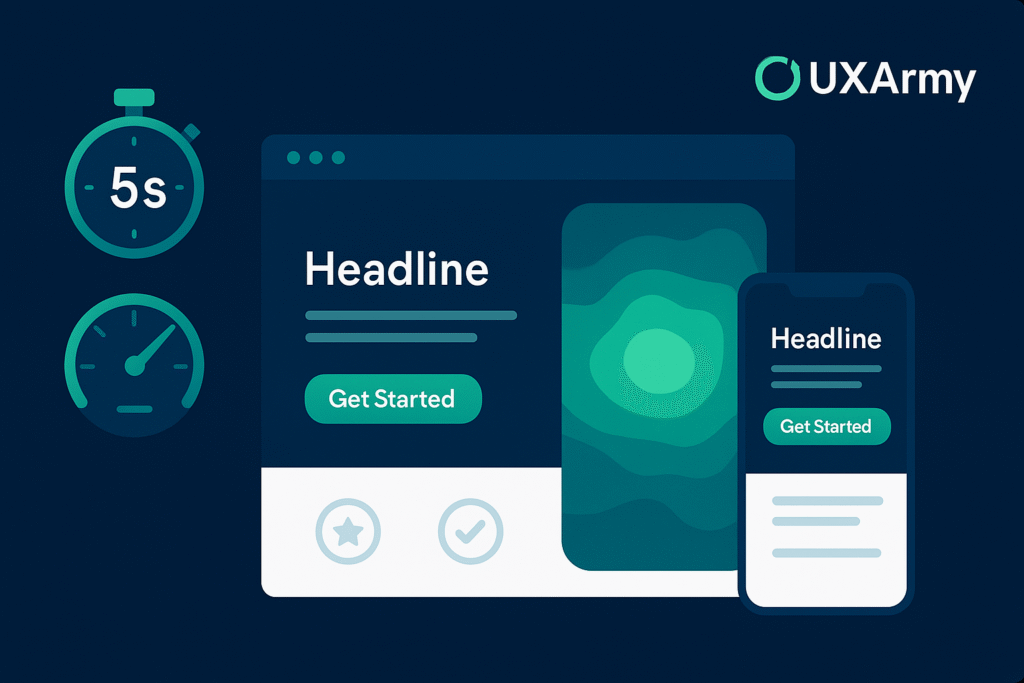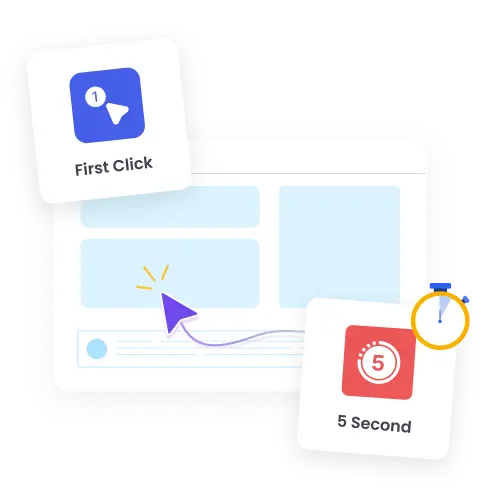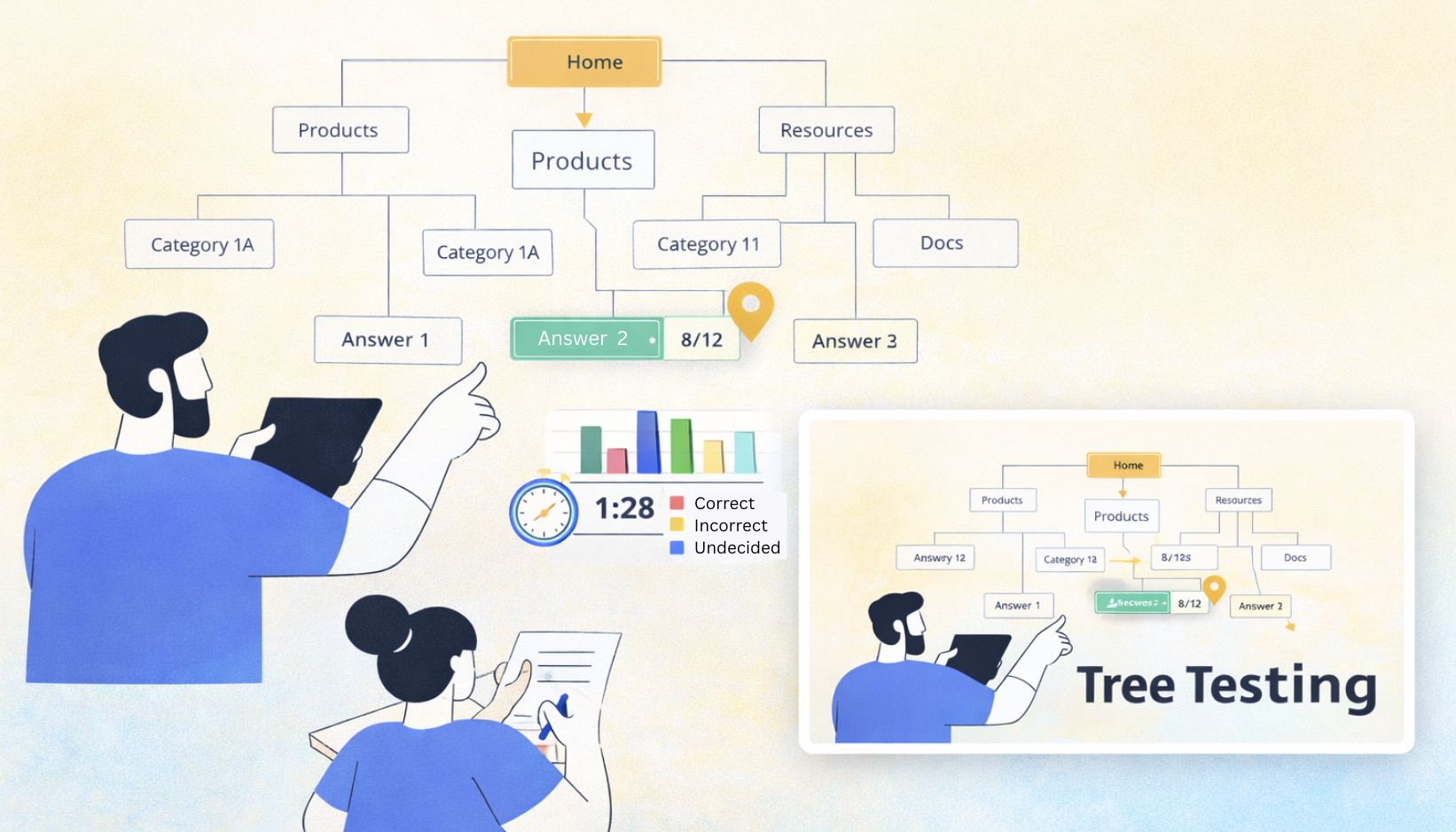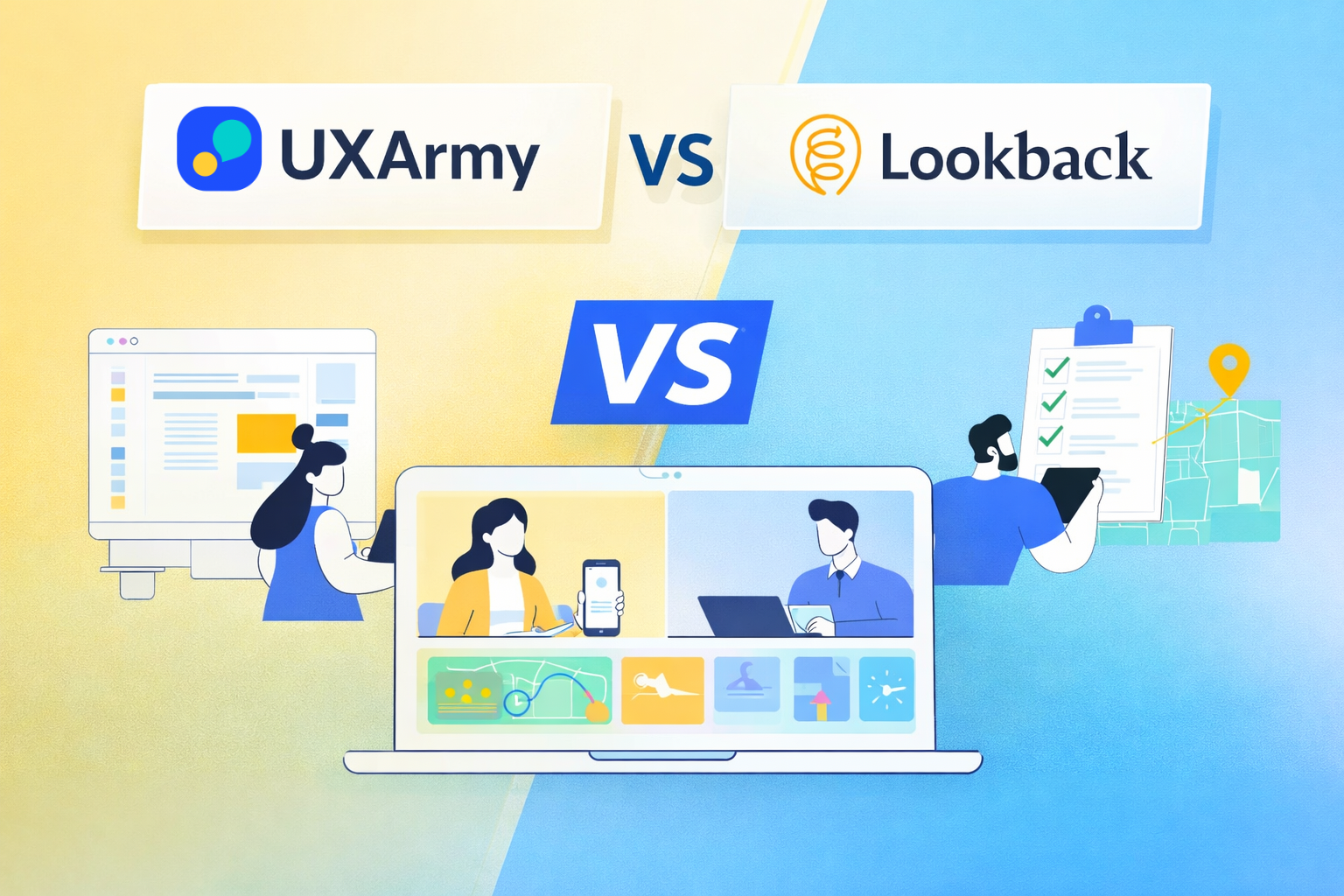Imagine this: you’ve just spent money on Google Ads or Meta ads campaigns, carefully targeting your audience. A user clicks your ad, lands on your page….and within seconds, they’ve hit the back button.
Landing pages are designed to guide users toward conversion. The harsh truth of web user behavior depends upon how those pages are designed. Get them wrong, and you are silently burning your allocated budget.
What Landing Pages Are, Who Needs Them Most, and Why
A landing page is a single-purpose page built to persuade a visitor to take one specific action: start a free trial, request a demo, buy a product, join a waitlist, register for a webinar, download a guide.
Unlike a homepage, which tries to serve many audiences-landing pages are focused, measurable, and ruthlessly aligned to a conversion. They matter because they’re entry points: your ad traffic, email clicks, and social promotions all pour into them, and the first few seconds determine whether users move forward or back out.
Ready to build that trust and kickstart your research?
let’s make trust the foundation of every project you work on.

Most popular usage of the landing pages are in the following scenarios:
- SaaS startups and B2B companies: demo/lead capture pages are the lifeblood of pipelines.
- E-commerce brands: product launch pages, seasonal campaign pages, and limited-time offers.
- Marketers running paid traffic: every campaign deserves a tightly matched landing page to the intent (and wording) of the ad.
- Education and events: course enrollments, webinar signups, conference registrations.
The stakes are immediate! Research shows people can form an impression of a website’s visual appeal in as little as 50 milliseconds (0.05 seconds). That snap judgment shapes whether they explore or abandon. First impressions are not a “nice to have”! They’re the front door to your funnel. Taylor & Francis OnlineResearchGateAna Andjelic
The Psychology of First Impressions (and Why They Drive Exploration)

A research done at a university brought forward the 7/11 rule. That research has shown that within the initial 7 seconds, people will form 11 impressions of you. Those impressions are based on non-verbal cues and they highly depend upon the experiences and background of the person who you are in front of or starting to interact with.
The internet is full of quotes about first impressions:
“First impressions LAST”
“First impressions are important, you only make one of them!”
“First impressions are the most lasting”
…and so on.
Just like business people clad in shiny suits try to make the best of their first impressions while trying to ink a deal, UX Designers and Digital marketers prepare their Design / artwork for a visitors’ great first impression of their landing pages.
Snap judgments
People judge extremely fast, often in less than 100 ms. That initial evaluation is sticky: it colors how users interpret everything that follows (the Halo effect), which means an appealing, coherent landing page buys patience for minor flaws; an incoherent one gets punished immediately.
Cognitive fluency
The brain rewards what’s easy to process. Familiar layouts, clear typographic hierarchy, and unambiguous calls-to-action (CTAs) reduce cognitive load and increase trust. Conversely, novel or cluttered structures force users to work, which feels risky and exhausting in the first seconds.
Aesthetic-usability effect
Users tend to perceive beautiful interfaces as more usable and are more forgiving of small issues when aesthetics are strong. That doesn’t excuse poor UX, but it explains why polish and consistency pay off at the first glance.
Prototypicality and visual complexity
Google-affiliated research shows users prefer designs that look like the recognized “prototype” for a site category (pricing pages that look like pricing pages, product pages that look like product pages) and that lower visual complexity beats higher complexity for immediate appeal. For a landing page, this means familiar patterns executed cleanly usually outperform special-snowflake layouts. Download the Research Paper
Speed and patience
Performance is part of first impressions. As load time rises from 1 to 3 seconds, bounce probability shoots up; over half of mobile visits are abandoned if a site takes longer than ~3 seconds to load. You can have a gorgeous hero, but if it arrives late, the impression is already lost.
Role-by-Role Playbooks: What Each Discipline Must Prioritize
Landing pages succeed when every discipline plays its part with precision. In this section, we’ll break down what UX designers, UI designers, design researchers, and marketers each need to prioritize in the first moments of a user’s visit. Think of it as a role-by-role playbook: concrete responsibilities, common pitfalls, and expert recommendations for making those first impressions count.
UX Designers – Architect the First 5 Seconds
Your objective is comprehension plus direction. In under five seconds, a visitor should be able to answer: What is this? Is it for me? What should I do next?
Begin with user intent, not internal messaging. If the ad promised “30-day free trial-no credit card,” surface that exact promise in the hero and match the CTA.
Design the scan path. Use F- or Z-pattern compositions to place headline → subhead → primary CTA exactly where eyes land naturally.
Strip ambiguity. Replace cleverness with clarity: “Get a demo” outperforms “Explore the future.” Test headline clarity with five-second tests. Nielsen Norman Group+1
Segment by entry point. Duplicate the page to align with different upstream sources (search ads vs. email vs. social) so intent always matches delivery.
Device-aware UX
Mobile first: Many impressions start on phones. Treat the hero like a billboard-crisp headline, tight subhead, unmistakable CTA, minimal form.
Fold realism. On mobile, “above the fold” is ~1-2 swipes. Prioritize information for those first two screens.
Thumb zones and reach. Primary actions should live in reachable areas on modern phones, with forgiving tap targets.
AI for UX
Predictive attention (pre-launch). Use AI heatmap tools to forecast where attention will go and whether the hero and CTA are actually seen within the first seconds. This saves cycles before you ever run traffic. Attention Insight+2Attention Insight+2
Rapid hypothesis screening. Generate multiple hero variants (headline/visual combinations) and use lightweight tests to converge on the best first impression.
UI Designers – Craft the Visual Halo (Trust at a Glance)
You control the emotional “read” of the page. Trust arrives visually before anyone reads.
Hierarchy with intent. The primary CTA must be the most visually dominant element (size, color, whitespace, and contrast-not just color).
Typeface chemistry. Pair a confident display face for the headline with a sober, readable text face for body copy; ensure optical sizes are tuned for mobile.
Color and contrast. Use high-contrast pairs for text and critical components; test WCAG ratios (4.5:1 for normal text, 3:1 for large).
Honest imagery. Favor real product shots, UI screenshots, or customer photos over generic stock. Authenticity lands faster than abstraction.
Device-aware UI
Responsive rhythm. Rather than simply “shrinking,” reflow the hero for small screens (e.g., stack headline over CTA; crop images smartly to keep the focal point).
Micro-performance. Inline critical CSS, compress hero images, lazy-load noncritical media-visual performance is part of the first impression.
AI for UI
Figma AI. quickly generate layout alternates and responsive variants, then refine by hand; don’t ship AI’s first draft-use it to explore breadth fast. Figma+1LogRocket Blog
Accessibility copilots. Run AI-assisted contrast suggestions and color-blind simulators while you design; fix contrast debt before hand-off. Stark+1
Design Researchers – Prove the Impression (Before You Buy Traffic)
Your mission is to validate that the first impression says what the team hopes it says-and that it sparks action.
Five-second testing. Show the page for 5 seconds, then ask recall questions: What is this product? Who’s it for? What stood out? If recall misses your value prop, iterate the hero. Nielsen Norman Group+1
Heatmaps and eye-tracking. Confirm the hero and CTA win the first fixation. Combine predictive maps (fast) with real behavior (post-launch) to triangulate.
Qual + quant pairing. Bounce rate and scroll depth explain “what” but rarely “why.” Add short intercepts (“What were you looking for today?”) for emotional context.
Version testing by source. Test the version matched to each acquisition source; intent from branded search vs. cold social differs wildly.
AI for Research
Auto-summarize first-impression feedback and cluster themes. Use it to identify copy confusions at scale.
Predictive attention pretests reduce dead-end layouts before you recruit participants. Attention Insight
Marketers – Guard the Promise and Eliminate Friction
You own the promise-to-delivery thread. If the upstream message doesn’t match the landing experience, trust collapses.
Copy mirroring. Repeat the ad’s exact phrasing in the hero (“20% off today only”) to signal “you’re in the right place.”
Social proof early. Above the fold or just below it, place logos, star ratings, or a “trusted by X,000 teams” proof; this lubricates the first click.
One page = one goal. Resist “menu-izing” the landing page. Every extra pathway fights your main conversion.
Speed matters. Treat load time like ad spend-you’re paying for eyeballs; don’t squander them with slow pages.
AI for Marketing
Headline and CTA ideation. Use AI writers to generate dozens of variants; your craft is selecting, tightening, and ensuring claim integrity.
Personalization. AI can swap hero copy or illustrations based on source/segment. Start with simple rules (industry, campaign ID) and measure rigorously.
First Impressions Across Devices: Why the Same Page Succeeds on Desktop and Fails on Mobile
A landing page doesn’t live in one fixed format anymore. The same design that feels persuasive and polished on a 27-inch monitor can completely unravel on a 6-inch mobile screen. Device context changes everything; The fold, the scan pattern, the patience level, even the thumb reach zone. If you’ve ever looked at analytics and seen desktop conversion rates outpacing mobile by 2x or more, chances are your first impression is failing on the smaller screen.
Desktop: Space to Build Trust
On the desktop, you have the luxury of real estate. You can show a headline, a strong subhead, a supporting graphic, social proof, and a clear CTA above the fold. The user’s eye follows an F-pattern, and if your hierarchy is well designed, they feel oriented within seconds. But that same “above the fold” layout doesn’t translate to mobile. It often buries the CTA two scrolls down.
Mobile: Brutal Constraints, Higher Stakes
Mobile users are ruthless. Slow load by even one extra second and bounce rates spike. Headlines must shrink from clever taglines to billboard clarity: 10 to 12 words max, immediate payoff. CTAs need to live inside thumb-friendly zones. And remember: mobile “above the fold” is often just 600 to 700 pixels, so what you surface in those first two swipes dictates whether users engage or disappear.
Tablets: The Forgotten Middle
Tablet traffic is smaller, but dangerous if ignored. Many teams test only desktop and mobile breakpoints. The result? A stretched or cramped layout on tablets that feels sloppy and untrustworthy. A well-tuned tablet experience can actually mimic desktop trust levels with mobile simplicity. A competitive advantage since many competitors ignore it.
Across all devices, speed is design. A crisp mobile hero that takes four seconds to load is worse than no hero at all. Optimize images, preload key fonts, and test your Core Web Vitals on real networks, not just in the office Wi-Fi bubble. First impressions aren’t just visual. They’re temporal.
How AI Is Changing the Stakes (and the Workflow)
AI has raised the bar for first impressions in two ways: (1) it enables faster exploration (many versions, quickly), so your competitors iterate more; (2) it nudges users to expect personalization and relevance immediately. The upside: every role can use AI to front-load learning.
Where AI helps most
Pre-launch attention prediction: forecast whether your hero pulls focus without a single user session. Attention Insight
Rapid multi-variant creation: generate multiple hero visuals or copy angles in minutes, then validate with quick tests. FigmaLogRocket Blog
Accessibility at design time: AI-assisted contrast fixes and color suggestions reduce costly rework later. Stark+1
Pitfalls That Sink First Impressions (Even on “Pretty” Pages)
Even the most visually polished landing page can fail at first impressions if it stumbles on fundamentals. In this section, we’ll explore the common pitfalls that silently kill user trust-from slow load times and mismatched messaging to cluttered layouts and accessibility gaps. Think of it as a checklist of what not to do if you want your landing page to keep users engaged beyond those first few seconds.
- Slow loads: a heavy hero, render-blocking scripts, or unoptimized fonts destroy the opening moment; bounce risk jumps as you cross 1-3 seconds. Google Business
- Copy-promise mismatch: the ad says “Free 30-day trial,” the page hedges with “Contact sales.” Users feel duped.
- Visual clutter: multiple competing CTAs, carousels, and dense navs.
- Generic stock imagery: quickly read as inauthentic; swap for product-in-context images.
- Accessibility gaps: low contrast, tiny tap targets, poor keyboard focus.
- “Concept car” layouts: unconventional patterns that violate prototypical expectations hurt instant comprehension. Google Research
How UX Research Platforms like UXArmy Elevate Landing Pages that Convert
Good landing pages aren’t born. They are measured into existence. Research platforms help teams move from opinions to evidence. Here’s how each role can leverage them:
- UX designers: run five-second tests on competing hero designs and see which communicates value fastest; pair with light unmoderated tests to confirm the primary task path is obvious. Nielsen Norman Group+1
- UI designers: collect rapid feedback on visual appeal, perceived trust, and clarity of the CTA; combine with predictive attention maps to confirm the CTA’s prominence.
- Researchers: orchestrate multi-method studies (first-impression tests, card sorts for content labels, click tests for “where would you start?”), then synthesize patterns for the team.
- Marketers: validate headline/offer resonance before you pour money into paid traffic; test ad-to-page message match across segments.
Case Studies and “Swipe Files”: Examples to Learn From
Below are curated round-ups and commentaries from reputable marketing and UX sources you can analyze or reference in your own teardown meetings:
Great (inspiration & teardowns)
HubSpot’s “36+ Landing Page Examples” (frequently updated, 2025): detailed breakdowns of what works and why. HubSpot Blog
Unbounce’s “40 Best Landing Page Examples of 2024” (and related lists): examples from many verticals, annotated for conversion tactics. Unbounce+2Unbounce+2
Search Engine Journal’s “Best Landing Page Examples” (2023+): large set with commentary on persuasive elements and structure. Search Engine Journal
Dismal (what to avoid, with fixes)
Growbo’s “9 Examples of Bad Landing Pages (and How to Fix Them)”-useful for spotting classic anti-patterns like vague headlines, CTA overload, and weak proof. growbo.com
Round-ups of “bad websites” (Colorlib/Weblium) are broader than landing pages, but still helpful to show speed, clutter, and accessibility pitfalls that tank first impressions. ColorlibWeblium
Note: When you use these lists, don’t just copy UI-reverse-engineer the principles. Which element communicates value? Where does the first fixation land? How is the ad promise mirrored in the hero? Does the page keep one goal sacred?
Toolkits by Role (with AI – Ready Picks)
Building great landing pages isn’t just about talent. It’s also about having the right tools at your fingertips. In this section, we’ll highlight AI-ready toolkits tailored to each role. UX, UI, research, and marketing-so you know exactly which platforms can speed up your workflow, improve accuracy, and sharpen first impressions. Think of it as a curated arsenal to help every discipline do its best work, faster and smarter.
UX Designers
Prototyping & testing: UXArmy (first-impression tests, unmoderated tasks), Maze, Optimal Workshop.
Pre-launch attention: Attention Insight (AI heatmaps).
Diagnostics: WebPageTest, Lighthouse (for speed).
UI Designers
Design & variants: Figma (plus Figma AI for layout ideas and responsive variants). Figma+1
Accessibility: Stark (contrast checker, color suggestions, simulators). Stark+1
Asset performance: Squoosh (image compression), font-subsetting tools.
Design Researchers
First-impression testing: five-second test approaches (NN/g guidance). Nielsen Norman Group
Behavior analytics: Hotjar/Clarity (heatmaps, session replays).
Interview orchestration: Lookback, UserTesting; AI-assisted note clustering.
Marketers
Page builders & testing: Unbounce, HubSpot CMS (with landing page builders and testing). HubSpot Blog
Copy ideation & QA: Jasper/Copy.ai (generation), then human tighten-up for tone and claim accuracy.
Speed monitoring: PageSpeed Insights; protect your ad spend by holding load time budgets.
Sources of Inspiration Worth Bookmarking
Here are some useful links that are good to be kept handy while creating landing pages.
- CXL (ConversionXL): evidence-based persuasion and first-impression discussions. CXL
- Nielsen Norman Group (NN/g): aesthetics, credibility, five-second tests, and homepage/landing guidance. Nielsen Norman Group+1
- Baymard Institute: rigorous UX research applicable to landing flows (esp. e-commerce).
- Growth.Design: delightful story-based UX case studies to share with stakeholders.
- Unbounce/SEJ round-ups: regularly updated example libraries. UnbounceSearch Engine Journal
A Practical Build Sequence (From Zero to “Good Enough to Test”)
Designing a landing page doesn’t need to feel overwhelming-what you need is a clear, step-by-step process that gets you from a blank screen to something strong enough to test with real users. In this section, we’ll walk through a practical build sequence: from drafting your first hero concept, to running quick five-second tests, to validating attention flow with AI tools. Think of it as a roadmap for moving fast without skipping the essentials that make first impressions count.
- Draft three hero concepts (headline + subhead + single CTA) that mirror your top three ad promises.
- Create mobile-first designs for each; ensure contrast and tap targets pass.
- Run a five-second test for recall and perceived relevance; kill the bottom performer.
- Use AI attention prediction on the top two to confirm CTA prominence.
- Choose one for launch; ship with lightweight analytics and a plan to A/B the headline in week one.
- After traffic accrues, review scroll depth, click maps, and early qualitative feedback; iterate.
Role-Specific Checklists (15-Second Audit)
UX Designers
- Does the hero mirror ad intent verbatim?
- Can a user answer “What/Why/Next” in 5 seconds?
- Is there exactly one primary path?
- Is mobile the first-class citizen?
UI Designers
- Is the primary CTA unmissable (size, color, whitespace, contrast)?
- Is typography legible on small screens (line length/height tuned)?
- Do images compress and load fast without layout shift?
- Are key components accessible (contrast ≥ 4.5:1 for body text)?
Design Researchers
- Have you run a five-second test on the real hero content? Nielsen Norman Group
- Did you verify first fixation on the CTA or hero message?
- Do qualitative findings explain the quantitative patterns (bounce, scroll)?
Marketers
- Does the headline copy repeat the ad promise exactly?
- Is social proof visible early?
- Do you have two headline variants queued for A/B testing?
- Are you monitoring speed like a KPI?
The first seconds on a landing page determine whether a visitor leans in or opts out. Psychology favors familiar, simple, and fast. Design can earn trust before a word is read. Copy should mirror the promise that brought the visitor here. Research verifies whether your intended impression is actually landing. Marketing keeps the message tight and the path singular. And AI-applied thoughtfully-helps every role explore breadth faster and validate focus earlier.
Start small and iterate: ship one clear hero, measure, and improve. Your goal isn’t a perfect page-it’s a first impression that reliably triggers the next step.
Run a quick five-second test to see if visitors instantly get your value and fix leaks before you buy more traffic.
Experience the power of UXArmy
Join countless professionals in simplifying your user research process and delivering results that matter
Frequently asked questions
How fast do users form first impressions of a landing page?
In roughly 50 milliseconds (0.05 s). That’s why your hero, message match, and visual clarity matter so much.u003ca href=u0022https://www.tandfonline.com/doi/abs/10.1080/01449290500330448?utm_source=chatgpt.comu0022u003e Taylor u0026amp; Francis Onlineu003c/au003e
What matters more in the first impression of the landing page – Design or Copy?
They’re inseparable: design earns trust; copy delivers relevance. The fastest win is “message match”-mirror the ad’s promise in the hero while the UI makes the next step obvious. NN/g’s guidance on first impressions and five-second tests is helpful here.u003ca href=u0022https://www.nngroup.com/articles/first-impressions-human-automaticity/?utm_source=chatgpt.comu0022u003e Nielsen Norman Group+1u003c/au003e
Isn’t novelty good? Why stick to “prototypical” layouts?
Novelty can delight later, but first impressions prefer recognizable patterns with low visual complexity. Earn the right to surprise after the hero.u003ca href=u0022https://research.google/pubs/the-role-of-visual-complexity-and-prototypicality-regarding-first-impression-of-websites-working-towards-understanding-aesthetic-judgments/?utm_source=chatgpt.comu0022u003e Google Researchu003c/au003e
How many CTAs should a landing page have?
One primary CTA. You can include low-emphasis secondary links (“Learn more”), but don’t split attention among competing primary actions.
What’s the best way to test first impressions of a landing page before launch?
Combine a five-second test for recall and perceived relevance with AI attention predictions to check whether eyes go to the right place. Then run a quick A/B on headline variants with live traffic.u003ca href=u0022https://www.nngroup.com/articles/testing-visual-design/?utm_source=chatgpt.comu0022u003e Nielsen Norman Groupu003c/au003eu003ca href=u0022https://attentioninsight.com/?utm_source=chatgpt.comu0022u003eAttention Insightu003c/au003e
Where can I find credible, up-to-date examples (good and bad landing pages)?
HubSpot’s and Unbounce’s example libraries are updated often; Search Engine Journal publishes round-ups; several marketing sites curate “what not to do.” Start here: HubSpot’s 2025 list, Unbounce’s 2024 round-ups, and SEJ’s 2023 examples; for anti-patterns, see Growbo and similar critiques.u003ca href=u0022https://blog.hubspot.com/marketing/fantastic-landing-page-examples?utm_source=chatgpt.comu0022u003e HubSpot Blogu003c/au003eu003ca href=u0022https://unbounce.com/landing-page-examples/best-landing-page-examples/?utm_source=chatgpt.comu0022u003eUnbounceu003c/au003eu003ca href=u0022https://www.searchenginejournal.com/best-landing-pages/494196/?utm_source=chatgpt.comu0022u003eSearch Engine Journalu003c/au003eu003ca href=u0022https://www.growbo.com/examples-of-horrible-landing-pages/?utm_source=chatgpt.comu0022u003egrowbo.comu003c/au003e
What is a five-second test?
A quick validation where users view your page for 5 seconds, then recall what it’s about and what to do next—perfect for checking first-impression clarity. Try it with our u003ca href=u0022https://uxarmy.com/use-cases/five-second-test/u0022u003efive-second testu003c/au003e
How fast should a landing page load?
Aim for u003cstrongu003e≤2 secondsu003c/strongu003e. Google’s studies show abandonment spikes after ~3s and bounce risk rises sharply from 1→3s. Check yours with u003cstrongu003eu003cau003ePageSpeed Insightsu003c/au003eu003c/strongu003e.
What makes a “trustworthy” hero section?
A clear headline that mirrors the ad promise, a concise value subhead, early u003cstrongu003esocial proofu003c/strongu003e (logos/ratings), and one u003cstrongu003eprominent CTAu003c/strongu003e above the fold—clean layout, strong contrast, and fast load.
Do unusual layouts help or hurt?
Usually u003cstrongu003ehurtu003c/strongu003e first impressions: unfamiliar, complex patterns slow comprehension. Stick to familiar structures executed well; if you try novelty, A/B test it first.




